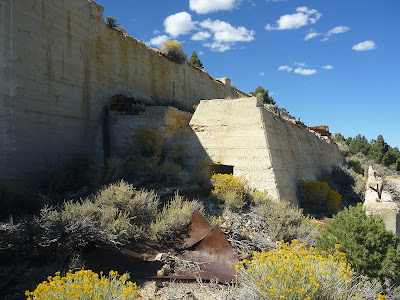 |
| Palisades summit, formerly known as Squaw Peak |
The 1960 Winter Olympic took place in “Squaw Valley,” a ski resort in California located northwest of Tahoe City in the Sierra Nevada range. Due to a controversy of the use of the term “squaw” (a word that has been used as a derogatory slur against Native American women), location names including the noun “squaw” are now changed—not only in California but across the United States.
The new names mainly rely on the words “Olympic,” “Washeshu.” and “Palisades.” The term “Olympic,” keeps the memory of the historic California ski resort in connection with the 1960 Winter Olympic alive. “Washeshu” is the Washoe word for “the people,” which has been selected to honor the the new commitment to inclusion and diversity. The term “Palisades” means “line of bold cliffs” and the upper mountain terrain has multiple granite-wall locations, two of which are already named “The Palisades”—for example, see the Palisades summit.
 |
| View of Palisades Tahoe from Palisades summit |
You frequently will find old names in former publications and blog posts; like in my "Marmots at Squaw Valley High Camp" post from 2007. To look up the new name, I put together the following list of current and expected name changes:
- Squaw Valley: now Olympic Valley
- Squaw Creek: now Washeshu Creek
- Squaw Peak: now Washeshu Peak
- Squaw Valley Ski Resort: now Palisades Tahoe
- The Village at Squaw Valley: now The Village at Palisades Tahoe
- Squaw Valley Lodge: now Palisades Tahoe Lodge
- Resort at Squaw Creek: will it become “The Death Star” as locals lovingly (or ironically) call the luxury resort?
The name replacement is an ongoing process. You still can find trail markers—labeled with the former valley name—while hiking along the trails connecting historic spots, recreational sites and vista points of the majestic “Washeshu Land.”
References & more
Evan Symon: Famed Squaw Valley Ski Resort Changes Name to 'Palisades Tahoe' Website: https://californiaglobe.com/articles/famed-squaw-valley-ski-resort-changes-name-to-palisades-tahoe/ .
The 1960 Winter Olympics Square Valley Lodge: Palisades Tahoe Lodge. Website: https://www.squawvalleylodge.com/ .
Palisades Tahoe Announces New Names For Squaw Peak & Squaw Creek. Unofficial Networks. Website: https://unofficialnetworks.com/2022/09/12/palisades-tahoe-squaw-peak-creek/.
The Name Change, Part Three: The Resort's New Name. Palisades Tahoe blog, Aug. 27, 2022. Website: https://blog.palisadestahoe.com/general/the-new-name/.
Olympic Valley, California.Wikipedia. Website: https://en.wikipedia.org/wiki/Olympic_Valley,_California.
The Resort at Squaw Creek Announces Name Change Top Priority. Unofficial Networks. Website: https://unofficialnetworks.com/2021/09/16/resort-at-squaw-creek-announce-upcoming-name-change/.
Squaw Valley Resort: Palisades Tahoe. Website: https://www.travelandleisure.com/travel-news/squaw-valley-renamed-palisades-tahoe.
All websites were accessed between Oct. 10 and Oct. 19, 2022.













